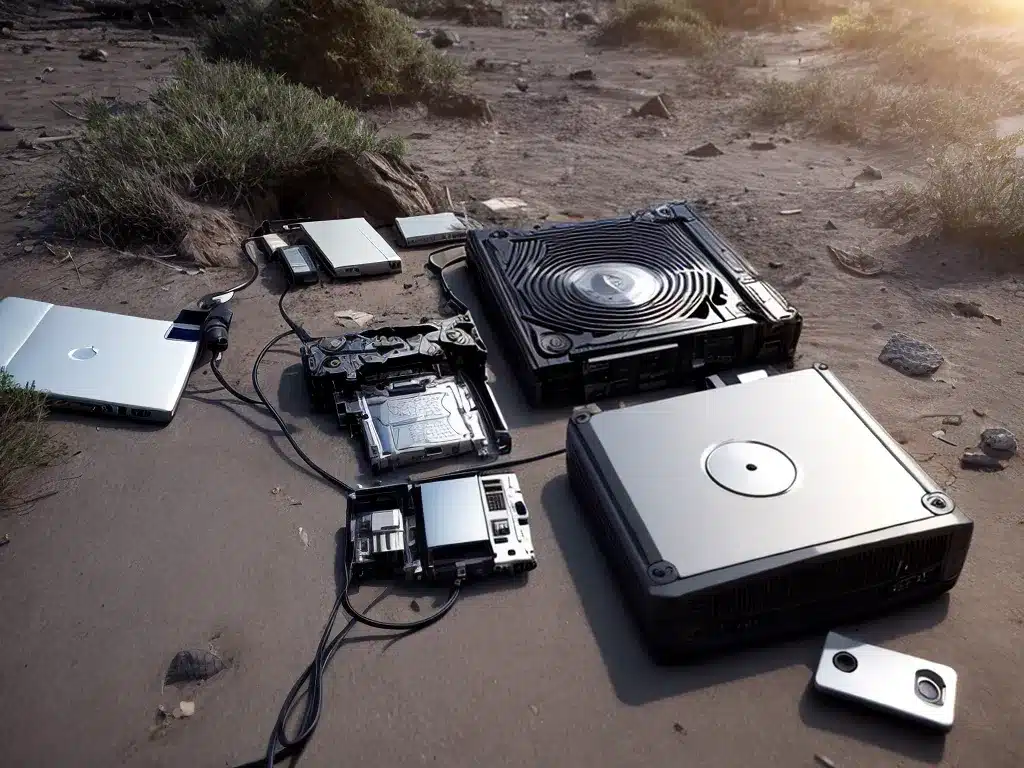
Introduction
Having a hard drive fail or become corrupted can be incredibly stressful. Important files like family photos, financial documents, or work projects may suddenly become inaccessible. While hard drive failures are never fun, advancements in data recovery technology have made it easier to recover lost files from even severely corrupted drives. This guide will walk through the key factors to consider when attempting data recovery in 2024.
Causes of Hard Drive Corruption
Understanding what may have caused the hard drive issues can help guide the recovery process. Here are some of the most common causes of hard drive corruption:
Physical Damage
Physical damage, such as the hard drive being dropped or impacted, can disrupt the mechanical components and make data recovery challenging.opening the drive housing in a professional data recovery cleanroom may be required.
Logical Errors
Issues with the file system, partitions, or other logical structures on the drive can render data inaccessible. This type of corruption is repairable through software-based data recovery methods.
Malware or Virus Infection
Malicious programs introduced to the computer can infect and corrupt files stored on the hard drive. Anti-virus and malware removal tools may allow recovery of infected files.
Electrical Failure
Power surges, connectivity issues, PCB failure or motor issues can prevent the hard drive from powering on and accessing stored data. This often requires specialized hardware repairs to regain access.
Data Recovery Options
If the hard drive is still partially functional, there are a few different data recovery options to try before bringing it to a professional recovery service.
In-System Recovery
If the drive is still recognized by the operating system, recovery software can be used to scan the drive and extract recoverable files. Examples include Recuva, EaseUS Data Recovery Wizard, and Stellar Data Recovery.
Bootable Recovery Tools
For more severely corrupted drives, boot from a USB recovery tool like R-Studio, SpinRite, or HDDSuperClone to attempt extracting files from the drive directly.
Removal and Slave Recovery
Physically removing the drive and connecting it as a secondary slave drive on another computer may allow file recovery if the drive has logical corruption. This avoids further overwriting the drive.
Professional Data Recovery Services
For physical failure, significant logical corruption, or unsuccessful DIY recovery, a professional recovery lab can disassemble the drive and use specialized tools to manually repair and extract the data. Key factors when researching data recovery companies include:
-
Cleanroom facilities – Proper environment to open hard drives without introducing contaminants.
-
Experience – Track record of successfully recovering data from failed drives. Look for expertise with specific brands like Western Digital or Seagate.
-
Security – Important that recovered data is kept fully confidential and secure.
-
Pricing – Upfront flat rates or price ranges based on failure type. Avoid per GB pricing.
-
Evaluation – Free or low-cost evaluation to determine recovery feasibility before charging full price.
-
Success Rates – Percentage rate of successful recoveries claimed by the provider. Higher is better.
Leading professional data recovery services include DriveSavers, Gillware, Secure Data Recovery, and Ontrack.
Preventing Data Loss
While data recovery services can rescue data in many cases, prevention is ideal to avoid corruption in the first place. Tips include:
-
Maintain up to date backups of important files, stored both locally and in the cloud.
-
Use enterprise quality hard drives designed for 24/7 uptime. Consumer models fail more often.
-
Install surge protectors and UPS battery backups to protect against power issues.
-
Keep drives properly cooled and ventilated to prevent overheating.
-
Schedule periodic surface scans with chkdsk to find and repair developing bad sectors.
Conclusion
Thanks to improvements in data recovery tools and techniques, recovering lost files from a corrupted hard drive is very possible even in 2024 and beyond. Understand the failure points, attempt DIY software recovery first if applicable, but rely on professional recovery services for physical issues or highly corrupted drives. Prevention is also key – maintain good backups and follow computing best practices. With proper precautions, recovering lost data from hard drive failure will hopefully become a rare occurrence.












